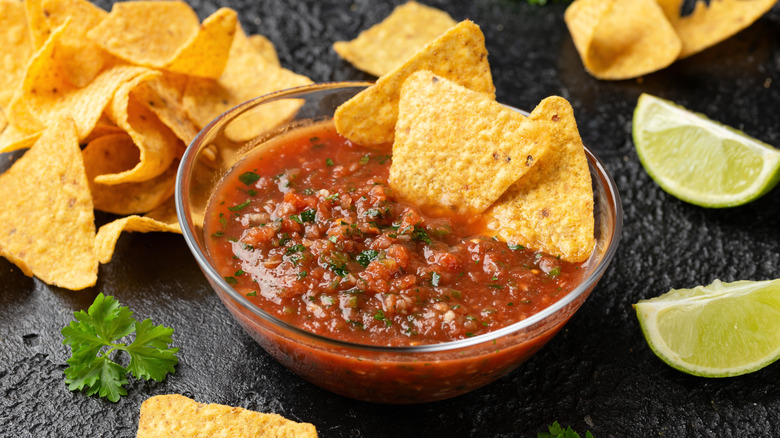Why You Need To Be Fermenting Your Salsa First
Salsa comes in all shapes and sizes. From smoky charred tomato salsa to juicy pineapple salsa, there's a recipe out there that is sure to please every palate. However, if you're looking to taste something extra adventurous, here's a trick you need to try: fermented salsa. It is a fun twist on your classic dip with an intense sour flavor and a punch of carbonation in every bite.
The type of fermentation used for salsa is called lacto-fermentation, which is the process of altering a food by allowing the naturally-present microbes in the ingredients to turn sugar into lactic acid. This is the same process used for fermenting other vegetable dishes, such as pickles and kimchi, and the increase in acid is what gives fermented salsa its tangy flavor. A byproduct of fermentation is also carbon dioxide, which creates bubbles in the salsa and gives it a delightful fizz.
You can ferment your salsa by adding it to a sanitized jar with your favorite pickling liquid (usually a combination of water, vinegar or citrus juice, and a bit of sugar) and leaving it out at room temperature for a few days. Just be sure the liquid is covering the salsa entirely to avoid premature spoilage.
Fermented salsa creates the perfect fizzy flavor
Everyone will have a different threshold for how sour or bubbly they prefer their salsa to be. More fermentation means more time for the microbes to do their thing. In general, the longer you allow your salsa to ferment, the stronger the flavor and fizz will be. However, for salsa, it is recommended to check on it within two days since this is typically how long it takes for it to begin fermenting. When it has reached a point that you're happy with flavor-wise, put it in the fridge to preserve its taste.
It is also important to check your salsa to ensure that it has not gone bad. Home-fermented vegetables can last as long as three months in the fridge, but trust your eyes and nose when assessing the freshness of your salsa. Correctly-fermented salsa will have an enjoyable tangy smell, but if it smells rotten or has visible signs of spoiling, like mold, throw it out.

